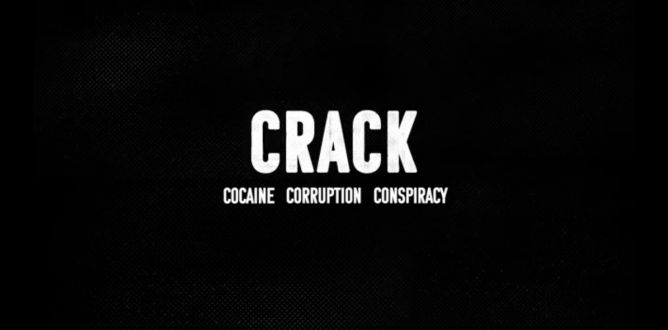Crack: Cocaine, Corruption, & Conspiracy Parent Guide
This documentary provides a surprisingly nuanced understanding of a complex problem that resonates today.
Parent Movie Review
The 1980s – Ronald Reagan, economic uncertainty, and cocaine. In its powdered form, cocaine is a drug for the wealthy, taken by users as diverse as stockbrokers and writers at SNL. But in that form, cocaine is well out of the reach of the poor – until the advent of crack. Crack, or freebase, is a cheaper form of cocaine which is smoked rather than snorted. And it takes off in America’s inner cities, turning communities into economic circles of dealers and users. But as more and more cocaine flows into the country and the price continues to drop, crack-cocaine turns into an epidemic – and it’s not a problem anyone in power has much interest in solving for now.
The crack epidemic is not a simple issue. The ins and outs of responsibility for the failure in confronting the spread of crack involve a lot of factors: communities, individuals, politics, and foreign policy. Everything from Reaganomics to Iran/Contra has a part to play, and it’s not easy to follow some of the threads in a story this complex. Thankfully, director Stanley Nelson does a remarkable job of taking a huge issue and breaking it down into simpler, more digestible pieces. Taken as a whole, they provide a surprisingly nuanced understanding of a multifaceted problem: individually, they provide personal insight into smaller contributors to the issue.
Obviously, there are going to be some content concerns in a documentary about crack-cocaine. People are seen making, using, and selling crack, which shouldn’t come as a surprise. There are related conversations about prostitution and violence, none of which are graphic – just graphic enough to be strongly discouraging. There’s also surprisingly limited profanity, although probably too much for highly sensitive viewers.
So I wouldn’t recommend showing this to your 9-year old, but I’d cautiously say that anyone 14 and above could probably benefit from watching this documentary. It isn’t always pleasant viewing, but it is compelling and significant. The problems of the past have a way of shaping the problems of the present, and however much we’d like to avoid them, I don’t think that’s an option here. The impacts of this story on our understanding of the prison industrial system, political procedures, corruption, the current opioid epidemic, and militarized policing are important reminders that these modern issues were not born in a vacuum. Pretending otherwise isn’t going to get anything done.
Directed by Stanley Nelson. Running time: 89 minutes. Theatrical release January 11, 2021. Updated October 2, 2021Watch the trailer for Crack: Cocaine, Corruption, & Conspiracy
Crack: Cocaine, Corruption, & Conspiracy
Rating & Content Info
Why is Crack: Cocaine, Corruption, & Conspiracy rated TV-MA? Crack: Cocaine, Corruption, & Conspiracy is rated TV-MA by the MPAA
Violence: There are references to shootings and murders. People are shown being struck by police.
Sexual Content: There are references to people engaging in prostitution for drugs.
Profanity: There are two extreme profanities, two scatological terms, and infrequent mild profanities and terms of deity.
Alcohol / Drug Use: People are shown snorting cocaine and smoking crack-cocaine. There are references to marijuana and opioids.
Page last updated October 2, 2021
Crack: Cocaine, Corruption, & Conspiracy Parents' Guide
Legal approaches to drugs vary wildly in different countries. What is the approach in your country? Do you think it is just, fair, and effective? Are there other countries whose approaches you would emulate? Why?
The Guardian: From cannabis cafes to death row: drugs laws around the world
How much responsibility do you think the Central Intelligence Agency bears for allowing cocaine to be imported in the course of the Iran/Contra operations? What do you think is the appropriate response? Why?
PBS: Cocaine, Conspiracy Theories & the CIA in Central America
Wikipedia: CIA involvement in Contra cocaine trafficking
The documentary focuses on the effect crack had on massively increasing the U.S. prison population. Why is that a problem? What are the costs associated with mass incarceration? What kind of behavior does this encourage on the part of private for-profit prisons? What are the results of those strategies?
The Conversation: America’s mass incarceration problem in 5 charts
Home Video
Related home video titles:
Another, less despairing, documentary about human relationships with drug use is Have a Good Trip, which explores the use of psychedelics for a variety of reasons.
On the fictional side of things, American Made stars Tom Cruise as a private pilot smuggling drugs across the US border for a variety of customers…including the CIA. A more modern version is The Mule, starring Clint Eastwood.

